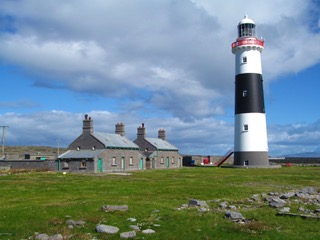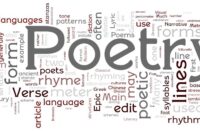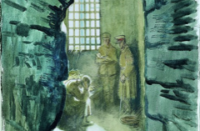“Is it hard to see death when it is disguised and tricked out in the surface trappings of life?”
John Healy, Death of an Irish Town.
If most Irish people think of the country’s Irish-speaking regions in Cos. Donegal, Galway and Kerry at all, they largely think of them in the form of memories of first kisses and stolen cigarettes behind secondary schools in remote villages along the Atlantic coastline when their parents sent them to coláistí samhraidh as teenagers, aping the American summer camp experience.
Any time they travel to one of these areas as adults it’s most likely to be as a tourist once again, be it as a student on an immersion course or to post photos of themselves along the Wild Atlantic Way on their Instagram.
These villages certainly cater for this: you only have to drive through the villages of Bearna and An Spidéal in Co. Galway, dominated by hotels, craft villages selling handmade souvenirs, and expensive seafood restaurants, to see how tourism has come to define their local economy.
In one particularly extreme case, the island of Inis Oírr (population 260) can expect as many as 2,000 visitors a day at the height of the tourist season.
This drive towards a tourist economy has been taking place along Ireland’s western seaboard for many years, but it took on particular momentum after the economic crash of 2008, when the building industry collapsed for the best part of a decade and the volume of manufacturing employment that hadn’t already been outsourced dwindled even further.
One industrial estate in the Donegal Gaeltacht went from employing 1,300 people in 2008 to a mere 425 in 2016, an experience repeated in many other areas. At the onset of the covid-19 pandemic in 2020, 13 per cent of all jobs in Co. Donegal and 19 per cent in Co. Kerry were directly linked to tourism.
This figure was even more disproportionate in Irish-speaking areas, such as Gaoth Dobhair, the Aran Islands, and Corca Dhuibhne, where the local economy had long been reliant on visitors, and demand for staff in pubs, restaurants and hotels was such that workers were regularly brought in from outside the area, with little regard to whether or not they could or would speak Irish to Anglophone tourists.
Thankfully, the worst scenario for the tourism industry represented by the covid pandemic was mitigated by the “staycation” boom, in which people who would otherwise have gone abroad had to holiday within Ireland. There was an increase of 31 per cent in internal travel between June and September 2020 compared with the same period in 2019, a trend that largely held into the second year of the pandemic.
Unfortunately for many local people, this tourism boom has taken place after the hotel industry largely collapsed in the aftermath of the 2008 financial crash; for example, Gaoth Dobhair in Co. Donegal lost five of its six hotels between 2010 and 2015. This wave of tourists are instead staying in holiday homes and Airbnbs, giving rise to a surge in rents for accommodation during the peak tourist season. In the absence of hotels, rents for a holiday home reached heights of €800 per week in Gaoth Dobhair and €588 in the Irish-speaking district of Co. Kerry during the tourist season in 2021.
Given the possibility of returns like this, it can be little wonder that tourist accommodation has come to dominate the rental market. This was the case even before the “staycation” era. There were only three houses available as a long-term letting in the Kerry Gaeltacht, as opposed to 219 tourist lettings in the last off-season period before the covid pandemic, namely November 2019. There were as many as forty entire houses or apartments listed on Airbnb in the neighbouring town of Dingle, where many local people go to work or socialise.
The Irish-speaking districts are, sadly, far from unique in being overrun by hotels and tourist lettings at the expense of affordable housing for local people; but it’s often forgotten just how small these communities actually are. The Kerry Gaeltacht has a permanent population of only 8,729—barely more than half that of the Dublin district of Stonybatter, which is an estimated 15,000. That there were 219 tourist lettings among such a small population removes a major proportion of the area’s housing stock from circulation. This prices local people, who are reliant on low-paid and seasonal tourist work, out of the housing market almost entirely, given the gulf between what a landlord can make by letting to tourists as opposed to a local person who is working in a hotel, or selling to a wealthy retired person rather than a couple in their mid-twenties who wish to start a family.
From here, local people often have little option but to migrate to larger, Anglophone towns and cities or to emigrate in their search for secure work and housing opportunities. Between the 2011 and 2016 censuses the number of daily Irish-speakers in the Gaeltacht fell drastically, by 11 per cent. A fall in population of twenty young people over the course of a decade would pass unnoticed in a city, but in a small Irish-speaking village it represents a lost generation and could even lead to the closing of primary schools within a few years as demand falls beneath what is deemed viable by officials elsewhere.
Any rural village losing the shops, pubs and schools that have held it together for generations is a tragedy in itself, but there’s also a linguistic significance to this decline. The Gaeltacht represents the last areas of Ireland where Irish is naturally used in most if not all aspects of daily life, in particular the work-place, as opposed to an object of study, a social outlet, or a hobby. What’s often ignored by those living outside these areas is that Irish-speaking communities are, without exception, bilingual communities, in which Irish has co-existed with English, sometimes for hundreds of years, often with basic state services (outside the education system) and employment opportunities being nearly entirely Anglophone.
From this unpromising starting-point Irish has been gradually washed away over the years by the constant torrents of English from successive waves of inward migration as emigrants return home with English-speaking partners and children, omnipresent radio and television exposure to English, and an economic dependence on Anglophone tourism work. This is a bilingualism that works in only one direction, with Irish gradually forced out of daily use, to the point where only 21 of the 155 officially defined Irish-speaking areas above the rate of 66 per cent daily use that sociolinguists claim to be the key to preventing language loss.
This is compounded by the fact that most, if not all, economic activity outside the education system is in English and for the consumption of English-speakers, as the use of Irish on signage, in local media and in businesses dwindles to nothing so as to better accommodate visitors. Communities are anglicised from the bottom up, and children grow up being exposed to Irish in ever-fewer situations outside the classroom. Irish as a living language withers into extinction all the while.
It can be observed that there has been an upsurge of interest in the language in recent years outside traditional Irish-speaking districts, yet a larger number of pupils attending Irish-language schools or adults attending Irish-language social events in English-speaking areas can hardly even begin to compensate for the loss of Irish as a community language used in all spheres of life.
Tourism represents the arrival of death in the trappings of life, a boon for landlords and publicans which just accelerates the decline of a language and the erosion of proud rural communities into glorified holiday camps.






